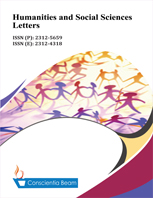Corporate Governance and Firm Risk: Evidence from Malaysian Shariah Compliance Companies
DOI:
https://doi.org/10.18488/journal.73.2020.82.169.193Abstract
The financial scandals that have hit financial markets and caused significant losses to investors have mainly been attributed to some defects in corporate governance systems. Hence, good corporate governance practices are ensured through several structures and mechanisms that merge the conflicting interests of managers, in one side, and shareholders and other stakeholders, in the other, toward the value maximization of the firm. Apart from this, the study focuses on the relationship between corporate governance and firm risk in Malaysia. Specifically, this study aims to investigate the corporate governance (CG) mechanisms (board independence, board size, existence of audit and nomination/remuneration committees, CEO duality, and independence of board committees) that influence firm’s risk measured by cost of equity capital. The study provides several literatures on CG mechanisms, agency theory, and CAPM in order to achieve the objective designed for this particular research. In order to answer the research question and objective, this study employs a quantitative method (secondary data). The sample consists of 302 firms from Public Listed Companies traded in Bursa Malaysia which are practicing shariah compliance in Islamic Capital Market (ICM) from 2013 until 2016. The data were analyzed by using SPSS version 23 including descriptive statistics, correlation matrix as well as regression analysis to examine whether higher governance quality is associated with a lower cost of equity capital. The findings showed a mixed result between CG mechanisms associated with firm risk. However, the result is consistent with prior literatures in line with corporate governance and risk.

